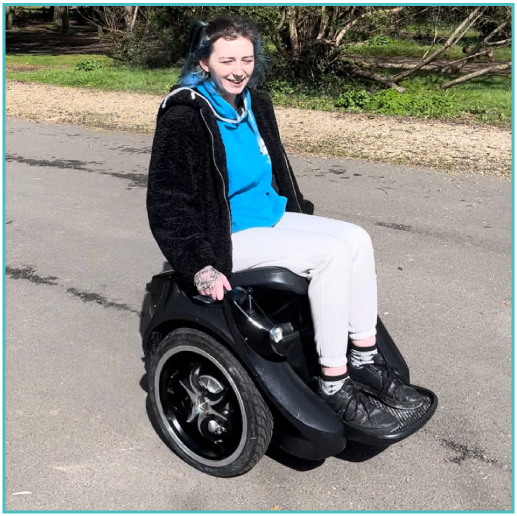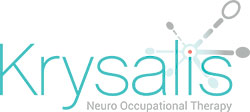Mobility matchmaking - part 1: The Omeo

Mobility matchmaking! Which 2023 wheelchair or mobility scooter would you choose to chum up with?
When the fit is right for you and your mobility challenge, a wheelchair or mobility scooter can be your best friend.
So, it’s good news that wheelchair and mobility scooter choice is now widening globally, thanks partly to the rapid progress in assistive technology (AT). [1]
Be it powered, manual, lightweight, sports, or all-terrain, every wheelchair design in daily use and every mobility scooter, it seems, is being reinvented to meet their users’ unique needs.
But to ensure you and your new wheelchair or mobility scooter are a good match, it’s vital to start your search by thinking carefully about the type of mobility buddy you want…
Ask yourself…
- How much time will you be spending in it?
- Which activities do you need it for and where?
- Does it give you the space, support, and comfort you need?
- Will you need any special accessories or an extra safety kit?
- How will you store and transport it?
- Have you any physical or cognitive challenges that would limit your use of it?
- What is your budget?
Funding for new or second-hand wheelchairs and mobility scooters can come at a stretch. And prices can be eye-wateringly high.
Yet your empowering new pal maybe by your side for many years. So, spend wisely!
And we’re not just talking about checking for wheelchair safety or mobility scooter safety and comfort essentials here. (See links to more guidance below.)
The role of a wheelchair or mobility scooter as an occasional or constant companion must meet your specific needs.
And as a mobile mate that may become a best friend, it must also make you feel good!
So, to help you explore your wheelchair or mobility scooter likes and dislikes and decide the best one for you, we’ve looked impartially* at 10 of the latest models making headlines.
We’ll be focusing on them individually over the coming months.
And our wheelchair and mobility scooter trials volunteer, Tia McConnell, 20, will share her experiences using these machines with her mobility challenges.
Let’s set off, then, with the wheelchair that places ‘me’ at the heart of its name – and won UK-wide acclaim after triumphing in BBC1’s Dragon’s Den...
The Omeo
 The Omeo is the only mobility device in the world that can offer a completely hands-free experience.
The Omeo is the only mobility device in the world that can offer a completely hands-free experience. 
Cristian Brownlee, Innovations Manager, Adapt Ability
Cristian Brownlee, 33, and Matt Walker, 43, are the founders of the UK’s official Omeo distributor, Adapt Ability, a company that prides itself on being run by disabled people for disabled people.
They successfully clinched a £40,000 investment for 15 per cent of the business during a televised Dragon’s Den pitch in February 2023. [2]
During their resulting Omeo roadshow, we caught up with them for a Q&A to learn more about the entrepreneurial business partners and their Dragon’s delight…
How did your disabilities occur?
Cristian: I sustained a spinal cord injury (SCI) in 2011 from a road traffic accident.
Matt: I sustained an SCI in 2018 from a fall.
How did your injuries impact your life plans?
Cristian: My injury sort of destroyed any life plans that I had but also allowed me to rewrite them. Who’s to say my original plans were any good!
Matt: I ran a lawn and tree care business at the time of my injury. However, my job satisfaction quickly diminished with the limitations of my injury. Starting the Omeo journey with Cristian has been an incredibly uplifting and satisfying direction for me to take and has given me huge purpose and sense of achievement.
How did your injuries affect your ability to carry out your daily living activities?
Cristian: Unsurprisingly, in the beginning, I was very dependent, but over time I gradually learned to take control of my life.
Matt: I was very fortunate to spend a few months at a spinal rehab unit which taught me a lot of the physical skills needed to cope with life in a wheelchair. The mental skills took a little longer to master, but with the help of my friends and family, plus having the purpose of work (and ultimately the Omeo!) I have adapted to my new daily life.
Did you benefit from any occupational therapy after your injuries?
“Occupational therapy taught me how to be the best version of myself with an SCI. Big shout out to the awesome team at RNOH! (Royal National Orthopaedic Hospital [3])” Cristian
Matt: The occupational therapists (OTs) who looked after me at Stoke Mandeville Hospital [4] and also from my local council at home had an incredibly positive impact on my recovery and helped me adjust to home life.
What other types of support have you found helpful since your injuries?
Cristian: Friends and family have always been my anchor, but I have also learned a lot from others with SCI.
Matt: My friends and family have been incredibly important. However, the Access to Work Scheme [5] has also had an immense impact on my ability to achieve my work and have a purpose. I also play wheelchair rugby, and this provides a great release from daily stresses and brings me together with like-minded people.
As well as SCI, what other health conditions does an Omeo suit?
The Omeo is suitable for anyone, provided they have the necessary cognitive function to operate it safely.
There are a few highly complicated health conditions when the Omeo may not suit the user. Still, we do everything possible to adjust or adapt to maximise the user’s safety and enjoyment.
 We view the Omeo as an all-in-one mobility solution. It has the compactness of a manual chair while still being able to tackle even the craziest terrains with ease.
We view the Omeo as an all-in-one mobility solution. It has the compactness of a manual chair while still being able to tackle even the craziest terrains with ease. 
How easy is the Omeo to operate?
It is as easy as operating any other mobility device. It is just different. Difference can be a good thing, though, as we have found that Omeo’s intuitive features make it almost become an extension of the user’s body, allowing us to feel more human.
In which areas of daily life has the Omeo proved most popular or beneficial so far?
The Omeo proves useful in almost any scenario. At home, the zero-turning radius enables you to move within small spaces comfortably.
In the community, users find that they don't need to deal with repeated conversations about their health condition, such as, ‘Why are you in a chair?’ Instead, the topics steer towards, ‘That is a cool piece of tech!’
At work, the Omeo empowers the user to do more and enjoy it.
Leisure-wise, games like tennis and badminton become immensely more fun while completely reducing the risk of wrist/shoulder injuries. However, we strongly recommend avoiding high-contact sports!
The Omeo also has the ability to improve its user’s mental well-being simply by increasing access to life experiences.
Its hands-free capabilities allow the operator to do so much more. It means they can engage with things around them, as well as carry or push objects and use gestures in conversations with people.
What sort of items have been pushed or carried while using an Omeo?
Carrying shopping bags or two cups of coffee and pushing lawnmowers or shopping trolleys!
Holding a dog lead is also a big 'can-do' or simply holding hands with your loved ones. Check out our Instagram @myadaptability for more excellent examples.
What’s the most unusual thing, so far, that has been done - or tried to be done - in an Omeo?
 A couple of weeks ago, one of our customers independently reached the 1300ft peak of the Wrekin in Shropshire, which was excellent! Now, that would certainly be unusual with most other wheelchairs!
A couple of weeks ago, one of our customers independently reached the 1300ft peak of the Wrekin in Shropshire, which was excellent! Now, that would certainly be unusual with most other wheelchairs! 
Omeo and you?
To help you decide if the Omeo is for you, check out its New Zealand manufacturer’s Q&A page [[6]], which includes the following facts and stats:
- Omeo width: 650 mm with standard tyres; 865mm with off-road kit
- Weight, including batteries: 75kgs
- Classified as a personal mobility device
- For use indoors and outdoors, including on the beach and in pedestrian areas
- Cannot be used on stairs, escalators, public roads, or extremely rough or slippery terrain
- Travels up to 12mph
- Recommended for weights from 40kgs to 110kgs
You can book a trial of the Omeo in the UK and learn everything you need to know about it through Adapt Ability. More details here: [7]
And here’s how Tia’s Omeo trial went in March 2023 in Dorset…
Tia’s trial
 We feel free in many ways every day, but feeling free from chronic pain turned my trial of the Omeo into a fantastic tale of the unexpected.
We feel free in many ways every day, but feeling free from chronic pain turned my trial of the Omeo into a fantastic tale of the unexpected. 
Having arrived at a windswept Weymouth park to meet Omeo demonstrators, Matt and Darren from Adapt Ability, I was experiencing the usual deep discomfort in my back and legs, typical after a long car journey.
Despite the pain, I was keen to focus as Darren ran through the instructions before inviting me to sit in the Omeo for the first time.

My immediate response was, ‘Wow! It’s so comfy!’ And just ten minutes into my trial, I was shocked to feel my pain easing to a rare, ignorable level.
But what was even better about the Omeo? The endless possibilities!
As a disabled person**, I am sick to death of hearing, ‘you can’t'. This mobility device tells me I CAN.
I CAN walk my dog, Delilah, alone (which I did for the first time during my Omeo trial). I CAN go through forests again. I could even go on the beach, which would be a dream come true!

There is so much I could do in an Omeo! From my experience, it could be a second-to-none solution for anyone with mobility issues.”
** Tia, 20, was diagnosed in 2019 with a spinal injury at L4/L5 level. This was followed by a fibromyalgia diagnosis in 2022 after symptoms that started when she was 16.
Stay safe
User safety is of paramount importance when it comes to any new wheelchair purchase or hire.
Find more guidance on this and other mobility aids via the NHS here: Walking aids, wheelchairs and mobility scooters - NHS.
Wheelchair wise
England’s Wheelchair Alliance has drawn up a wheelchair charter that sets out the standards for wheelchair provision and services nationally.
The alliance supportswheelchair users and their carers, including wheelchair funding advice. Find out more here: Wheelchair User - The Wheelchair Alliance.
* Opinions and endorsements published by others on Krysalis Consultancy Ltd blogs or publications do not necessarily reflect the views of Krysalis Consultancy Ltd.
Part two out now!
Recently on talking heads...
We are passionate about neurological rehabilitation; our neuro OT blog has been designed to help us share our collective wisdom to influence, educate and spark moments of discussion and reflection.
If you are interested in, or have been affected by brain injury, or are passionate about occupational therapy, brain injury and neurological rehabilitation, you are very welcome… come on in and join us!





